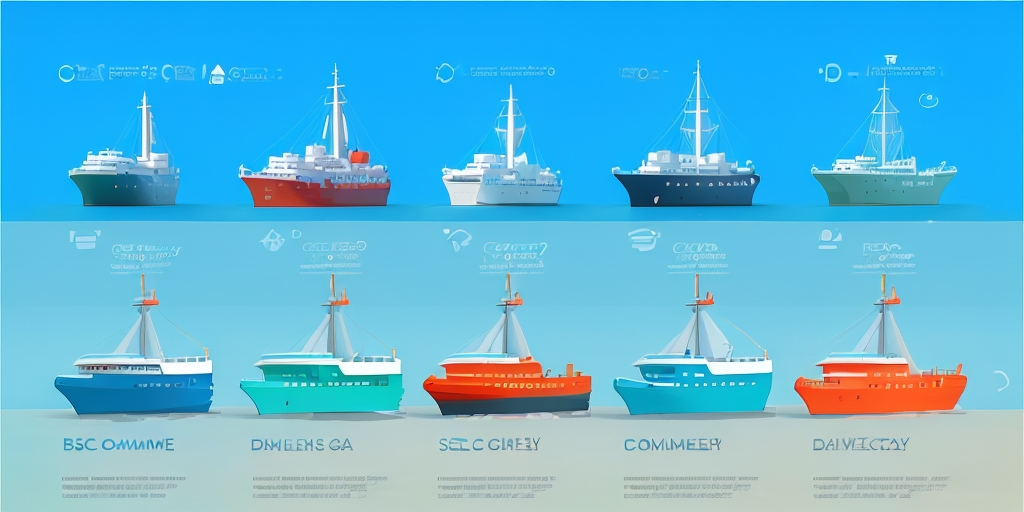Essential Insights into E-commerce Platforms: A Thorough Guide
I am a creative and analytical person who enjoys problem-solving and finding creative solutions. I am driven by curiosity and a passion for learning, and take initiative to explore and understand new concepts. I am a great communicator and collaborate well with others, and am always looking for opportunities to improve myself and my team.
Essential Insights into E-commerce Platforms: A Thorough Guide
Understanding the Concept of E-commerce

E-commerce, short for electronic commerce, is the process of buying and selling goods or services over the internet. It also encompasses the transfer of money and data to carry out these transactions. From ordering a pizza online to purchasing a new pair of shoes, e-commerce is a part of our everyday lives.
The Rise of E-commerce Platforms
E-commerce platforms have revolutionized the way businesses operate. They provide a platform for businesses to reach a global audience, breaking down geographical barriers. For instance, a small business in New York can sell its products to a customer in Tokyo, all thanks to e-commerce platforms. This global reach was unimaginable before the advent of e-commerce.
The Importance of E-commerce Platforms
E-commerce platforms are not just a luxury but a necessity for businesses in today's digital age. Here's why:
- Cost-effective: E-commerce platforms eliminate the need for physical stores, thereby reducing overhead costs such as rent and utilities.
- Efficient: They streamline business operations, making it easier to manage inventory, process orders, and handle customer service.
- Reach: They provide businesses with the opportunity to reach customers globally, 24/7.
Take Amazon, for example. It started as an online bookstore and has now become a global e-commerce giant, selling everything from electronics to groceries. This wouldn't have been possible without the power of e-commerce platforms.
Now that you have a basic understanding of what e-commerce platforms are and their importance, you might be wondering about the different types of e-commerce models. What are they, and how do they cater to different business needs? Stay tuned for the next part of this article, where we'll delve into the various types of e-commerce models and their roles in the digital marketplace.
Exploring the Different Types of E-commerce

Just as there are different types of businesses, there are also different types of e-commerce models. Each model is designed to cater to specific business needs and target audiences. Let's dive into the world of e-commerce models and understand how they function.
B2C, B2B, B2B2C, B2G, C2B, D2C, and C2C
These seven models represent the most common types of e-commerce. Here's a quick rundown:
- B2C (Business-to-Consumer): This is the most common model, where businesses sell directly to consumers. Think of your typical online retail store.
- B2B (Business-to-Business): In this model, one business sells to another business. A good example is a manufacturer selling to a wholesaler.
- B2B2C (Business-to-Business-to-Consumer): This model extends the B2B model to include e-commerce from businesses to consumers.
- B2G (Business-to-Government): Here, businesses sell products and services to governments.
- C2B (Consumer-to-Business): In this model, consumers sell their products or services to businesses. Freelance platforms are a good example.
- D2C (Direct-to-Consumer): This is when manufacturers sell directly to consumers, bypassing any middlemen.
- C2C (Consumer-to-Consumer): This model allows consumers to sell to other consumers. Platforms like eBay and Craigslist are perfect examples.
As the famous saying goes, "Variety is the spice of life." The same applies to e-commerce. The diversity of these models allows businesses to choose the one that best suits their needs and goals.
The Role of E-commerce Giants: Amazon and Shopify
When we talk about e-commerce, it's impossible not to mention Amazon and Shopify. These two giants have reshaped the e-commerce landscape, offering a plethora of opportunities for sellers worldwide.
Amazon is a prime example of a B2C model, but it also incorporates C2C elements through its marketplace. It's a one-stop-shop where you can find almost anything you need. From books to electronics, to clothing, Amazon has it all.
On the other hand, Shopify is a platform that allows businesses to set up their online stores. It's a B2B model that caters to businesses of all sizes, offering them the tools they need to succeed in the online marketplace.
These two platforms demonstrate the vast potential of e-commerce and how it can be tailored to meet diverse needs. But how does e-commerce differ from online shopping? Is there a difference at all? Stay tuned as we delve into this topic in the next section.
E-commerce Platforms vs. Online Shopping: What's the Difference?

It's easy to confuse e-commerce with online shopping. After all, they both involve buying and selling goods or services over the internet. However, they are not the same thing. Let's break down the differences.
Understanding E-commerce
E-commerce, or electronic commerce, is a broad term that encompasses all aspects of conducting business online. It's not just about buying and selling; it also includes marketing, customer service, inventory management, and more. For instance, when a business uses social media to promote its products, that's part of e-commerce. When a customer service representative answers a query via live chat on a website, that's e-commerce too.
Think of e-commerce as a big umbrella that covers all the different ways businesses use the internet to operate. As Bill Gates once said, "The internet is becoming the town square for the global village of tomorrow."
Understanding Online Shopping
Online shopping, on the other hand, is a subset of e-commerce. It specifically refers to the act of purchasing goods or services over the internet. When you buy a book from Amazon, order a pizza from Domino's website, or purchase a course on Udemy, you're engaging in online shopping.
Here's a simple way to remember the difference:
- E-commerce is about doing business online.
- Online shopping is about buying and selling goods or services online.
So, while all online shopping is e-commerce, not all e-commerce is online shopping. There are many other aspects to e-commerce that go beyond just buying and selling.
Now that we've cleared up the difference between e-commerce and online shopping, you might be wondering: what are the top e-commerce platforms out there? Which one is the best fit for my business? Stay tuned, as we'll be diving into that in the next section.
Reviewing Top E-commerce Platforms
In the vast ocean of e-commerce, numerous platforms are vying for your attention. Each one brings its unique features and benefits to the table, making the choice a bit overwhelming. Let's dive into the details of three top e-commerce platforms: Shopify, Etsy, and WooCommerce.
Shopify: A Comprehensive Review
Shopify is a big name in the e-commerce industry, and for good reason. Catering to businesses of all sizes, it offers a range of features that make online selling a breeze. From easy setup to a user-friendly interface, Shopify has it all. It's a one-stop-shop for all your e-commerce needs.
Some of the key features of Shopify include:
- Over 70 professional themes
- Mobile commerce ready
- SEO and marketing tools
- 24/7 customer support
Etsy: A Detailed Review
For those who are into handmade or vintage items and craft supplies, Etsy is the go-to platform. It's a unique e-commerce platform that allows artisans to showcase their creativity and reach a global audience.
Some of the key features of Etsy include:
- Easy to set up and manage
- Secure transactions
- Powerful tools for branding and marketing
- Community support
WooCommerce: An In-depth Review
WooCommerce is a customizable, open-source e-commerce platform built on WordPress. It's perfect for those who want full control over their online store. With WooCommerce, you can sell anything, anywhere.
Some of the key features of WooCommerce include:
- Complete control over your store
- Extendable with plugins
- Secure payments
- SEO optimized
As Steve Jobs once said, "Innovation distinguishes between a leader and a follower." These platforms are leading the way in e-commerce innovation, each in their unique way. But what does the future hold for e-commerce platforms? How will they adapt to the ever-changing digital landscape? Stay tuned to find out.
The Future of E-commerce Platforms

As we look ahead, it's clear that e-commerce platforms are not static entities. They are continually evolving, shaped by new technologies, consumer behaviors, and global events. So, what does the future hold for these digital marketplaces?
Emerging Trends in E-commerce
Several trends are currently shaping the future of e-commerce. One of the most significant is the rise of artificial intelligence (AI). AI is being used to personalize the shopping experience, making product recommendations based on a customer's browsing history and past purchases. For example, Amazon's recommendation engine, powered by AI, is said to generate 35% of the company's revenue.
Virtual Reality (VR) is another trend to watch. While still in its early stages, VR has the potential to revolutionize the online shopping experience by allowing customers to 'try on' products or 'walk' through virtual stores. IKEA, for instance, has already launched a VR app that lets customers design their own kitchens.
Mobile shopping is also on the rise. According to a study by Statista, mobile e-commerce sales are expected to reach $3.56 trillion by 2021, accounting for 72.9% of e-commerce sales. This trend is driving e-commerce platforms to optimize their mobile interfaces and invest in mobile apps.
The Impact of COVID-19 on E-commerce
The COVID-19 pandemic has had a profound impact on e-commerce, accelerating the shift towards a more digital world. As physical stores closed and people stayed home to curb the spread of the virus, online shopping became a lifeline.
A study by IBM found that the pandemic has accelerated the shift to e-commerce by five years. This rapid growth has presented both opportunities and challenges for e-commerce platforms. On one hand, they've seen a surge in demand. On the other, they've had to deal with supply chain disruptions and increased competition.
As we move towards a post-pandemic world, it's likely that many of the changes triggered by COVID-19 will stick. Consumers have grown accustomed to the convenience of online shopping, and many businesses have invested in their e-commerce capabilities. This suggests that the future of e-commerce is bright.
But what does this mean for businesses and consumers? And how can they prepare for these changes? Stay tuned for the final part of this article, where we'll wrap up our discussion and provide some key takeaways.
Wrapping Up
E-commerce platforms have undeniably revolutionized the business landscape. They have not only made it possible for businesses to reach a global audience but also made transactions more efficient and cost-effective.
Key Takeaways
Let's recap some of the main points we've covered in this comprehensive guide. We've explored the various types of e-commerce models, each serving a unique purpose and catering to a different audience. We've also distinguished between e-commerce and online shopping, highlighting that the former encompasses all aspects of operating a business online, while the latter is specifically about the online selling and purchasing of goods and services. We've also reviewed some of the top e-commerce platforms, including Shopify, Etsy, and WooCommerce, each offering unique features and benefits. Shopify, for instance, is a versatile platform suitable for businesses of all sizes, while Etsy caters to a niche market of handmade or vintage items and craft supplies. WooCommerce, on the other hand, is a customizable, open-source platform built on WordPress.
Looking Ahead
As we look to the future, it's clear that e-commerce platforms will continue to evolve and adapt to new technologies and trends. The rise of artificial intelligence, virtual reality, and mobile shopping are just a few examples of trends that are likely to shape the future of e-commerce. Moreover, the COVID-19 pandemic has undeniably accelerated the shift towards a more digital world, triggering changes in online shopping behaviors. This suggests that e-commerce platforms will play an even more critical role in the business landscape moving forward.
Conclusion
In conclusion, e-commerce platforms are here to stay. They have become an integral part of our digital age, transforming the way businesses operate and how consumers shop. Understanding these platforms is crucial for anyone involved in business today, whether you're a small business owner looking to expand your reach or a consumer wanting to make informed decisions about where and how you shop. As we move forward, it will be fascinating to see how these platforms continue to evolve and shape the future of commerce.



.jpg)
.jpg)

.jpg)
.jpg_nowm_1260.jpg)